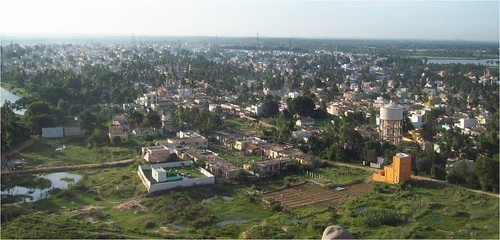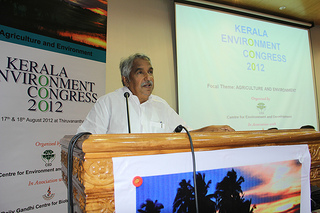Drinking and other Domestic Uses
Impact of pit-toilet leachate on groundwater chemistry and role of vadose zone in removal of nitrate and E. coli pollutants in Kolar District, Karnataka, India
Posted on 04 Jan, 2013 02:00 PMGiven the many problems associated with flush toilets and the sewerage system, pit toilets offer a viable solution in India. However, the use of soakpits raises the question of groundwater contamination. This paper assesses the impact of pit toilet leachate on groundwater quality in Mulbagal town (pop ~ 60,000) in Karnataka relies on pit toilets, and uses groundwater for drinking.
Water monitoring challenge in Yamuna basin- Educating communites along the river about the importance of water testing & quality
Posted on 03 Jan, 2013 11:01 PMWater, water everywhere, not a drop to drink! How truly these lines depict the picture of present scenario. There are lots of organizations, people and experts involved in the discussions and making efforts at international level to have safe, sustainable drinking water for all. Yet the efforts are not enough…
Briefing papers on ‘Jal kothis’, ‘Matka filter’, 'Dug wells' and ‘Phayedemand shauchalaya’: Local innovative solutions in flood prone Bihar by Megh Pyne Abhiyan (2011)
Posted on 29 Dec, 2012 03:14 PMThe briefing papers include the following:

"Arghyam prepares Water Quality Management (WQM) framework for rural areas" - Ministry of Drinking Water and Sanitation releases its first e-newsletter on water and sanitation in India (December 2012)
Posted on 24 Dec, 2012 08:51 PMThe newsletter refers to the nationwide campaign carried out by Arghyam, with the aim of creating awareness on water quality issues with a specific focus on fluoride contamination in groundwater sources, by engaging students from across the country in a water quality testing, analysis, and reporting.
In the newsletter, the spotlight is turned on:
Exploring linkages between the agricultural sector and the environment - Report on the Kerala Environment Congress organised by the Centre for Environment and Development at Thiruvananthapuram, between 16 -18 August 2012
Posted on 24 Dec, 2012 05:27 PMThe Congress was jointly organised by Centre for Environment and Development (CED), Thiruvananthapuram and the Rajiv Gandhi Centre for Biotechnology (RGCB), Thiruvananthapuram
Inauguration of the conference
Around 350 participants including eminent scientists, agricultural experts and students participated in the event. The conference was inaugurated by the Chief Minister of Kerala, Sri. Oommen Chandy. Speaking on the occasion, the Chief Minister, highlighted that development and environment were linked and that the approach to the cause of agriculture and environment needed to be realistic since the state could not neglect both development and environment. He also pointed out that Kerala was one state having a very high reputation in preserving and protecting the forest cover, which was much higher than the national average in the state. This was possible due to the will and awareness of the people of Kerala. He emphasised the need for a more realistic approach to deal with issues related to the agriculture and environment.

Inaugural speech by the Chief Minister of Kerala
The APWELL Project: Andhra Pradesh's experience with participatory hydrological monitoring
Posted on 18 Dec, 2012 02:04 PMPreventing groundwater abuse depends on the users' knowledge of what constitutes this over-exploitation and abuse, and why it is undesirable. The success of APWELL, therefore, depends on participatory hydrological monitoring in which the users were trained in basic hydrology and charged with monitoring the hydrological balance of the watershed.
Guidelines for preparation of detailed project report for rural piped water supply schemes- A document by Ministry of Drinking Water and Sanitation (2012)
Posted on 12 Dec, 2012 10:19 PMThis document by Ministry of Drinking Water and Sanitation provides essential components that should form part of detailed project report in village/multi village’s rural piped water supply scheme.
The main components of the guidelines include
Living rivers, dying rivers: Stuffed rivers of Vrishabhavathi-Arkavathi from the Cauvery system
Posted on 02 Dec, 2012 08:16 PMIntroduction

Drinking water treatment technologies - A handbook by National Environmental Engineering Research Institute & Ministry of Drinking Water and Sanitation
Posted on 30 Nov, 2012 10:22 PMThis handbook prepared by National Environmental Engineering Research Institute has eight chapters:
Chapter 1 introduces the objectives and approaches adopted to prepare the handbook.
Quality of air, water, wastewater and noise levels in Assam's coal fields - A report by North-Eastern Coalfields, Coal India (2012)
Posted on 28 Nov, 2012 08:03 PMThe report objectives include:





